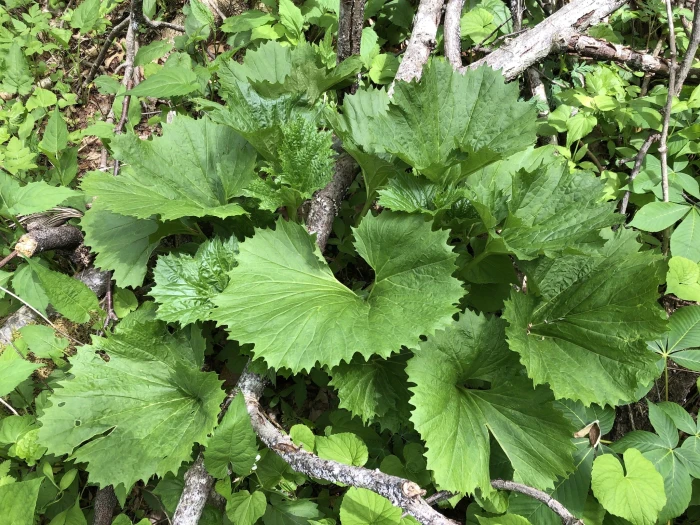Great Indian Plantain
(Arnoglossum reniforme)
Great Indian Plantain (Arnoglossum reniforme)
/
/

Scott Morris
CC BY 4.0
Image By:
Scott Morris
Recorded By:
Copyright:
CC BY 4.0
Copyright Notice:
Photo by: Scott Morris | License Type: CC BY 4.0 | License URL: http://creativecommons.org/licenses/by/4.0/ | Rights Holder: Scott Morris | Publisher: iNaturalist | Date Created: 2021-05-02T18:07:51Z |























Estimated Native Range
Climate Requirements for Moorpark, California
| This Plant | Your Site | Plant Suitability for Your Location | ||
|---|---|---|---|---|
| • Precipitation | 30" - 76" | 16" | Your precipitation may be insufficient for this plant. Irrigate N" / year. | Irrigate N" / year |
| • High Temp. | 73°F - 92°F | 88°F | Your summer temperatures are normal for this plant. | Excellent |
| • Low Temp. | 2°F - 31°F | 42°F | OK, but your winter temperatures are warmer than normal for this plant | OK |
This plant should grow well at your location with about N inches per year (Y minutes per month) of irrigation.
Summary
Arnoglossum reniforme, commonly known as Great Indian Plantain, is a deciduous perennial herb native to moist meadows, prairies, and open woodlands in the Eastern and Central United States. It typically grows to a height of 3-9 feet (0.9-2.7 meters) and a width of 2-4 feet (0.6-1.2 meters). The plant features large, kidney-shaped leaves and a tall, unbranched stem topped with clusters of small, fluffy white flowers that bloom in late spring to early summer. The flowers are not particularly showy but do attract pollinators such as butterflies and bees.
Great Indian Plantain is valued for its bold foliage and architectural height in native plant gardens and restoration projects. It is used in border plantings, as a backdrop in perennial beds, and for natural landscaping. This plant prefers consistently moist, well-drained soils and can tolerate part shade, although it thrives in full sun. It is generally low-maintenance, but it may require staking in windy areas or if grown in overly rich soils. While not commonly afflicted by serious diseases or pests, it can occasionally suffer from rust or leaf spots. Great Indian Plantain is not known for aggressive roots or invasiveness, making it a safe choice for most garden settings.CC BY-SA 4.0
Great Indian Plantain is valued for its bold foliage and architectural height in native plant gardens and restoration projects. It is used in border plantings, as a backdrop in perennial beds, and for natural landscaping. This plant prefers consistently moist, well-drained soils and can tolerate part shade, although it thrives in full sun. It is generally low-maintenance, but it may require staking in windy areas or if grown in overly rich soils. While not commonly afflicted by serious diseases or pests, it can occasionally suffer from rust or leaf spots. Great Indian Plantain is not known for aggressive roots or invasiveness, making it a safe choice for most garden settings.CC BY-SA 4.0
Plant Description
- Plant Type: Herb
- Height: 3-9 feet
- Width: 2-4 feet
- Growth Rate: Moderate
- Flower Color: White
- Flowering Season: Spring, Fall
- Leaf Retention: Deciduous
Growth Requirements
- Sun: Full Sun, Part Shade
- Water: Medium
- Drainage: Medium
Common Uses
Bee Garden, Bird Garden, Butterfly Garden, Low Maintenance
Natural Habitat
native to moist meadows, prairies, and open woodlands in the Eastern and Central United States
Other Names
Common Names: Great Indian Plantain
Scientific Names: Arnoglossum reniforme, Cacalia reniformis, Conophora reniformis, Mesadenia reniformis, Senecio atriplicifolius var. reniformis, Senecio reniformis, Synosma reniformis
GBIF Accepted Name: Arnoglossum reniforme (Hook.) H.Rob.